Growing luffa plants is not as difficult as some people think. With a few basic tips and tricks, you can be well on your way to having a thriving garden full of these spongy gourds.
In this guide, we’ll look at everything from where to plant them to how to harvest them. We’ll also cover some common mistakes so you can avoid them and ensure a successful growing season. Ready to get started? Let’s dive into how to grow luffa plants!
What Is Luffa Plant?
The term “luffa” actually refers to several species of cucurbits, which include gourds, melons, and other types of squash.
The most common type is the luffa aegyptiaca, which is usually grown for its spongy fruits that can be used as scrubbing tools or dishcloths. Luffa plants can also be cooked and eaten, though they are mostly used for their spongy texture.
Luffa: origins and characteristics
Luffa is native to tropical regions of Asia, Africa, and the Middle East. It’s a fast-growing vine that can reach heights of up to 30 feet (9 metres) if it has something to climb on.
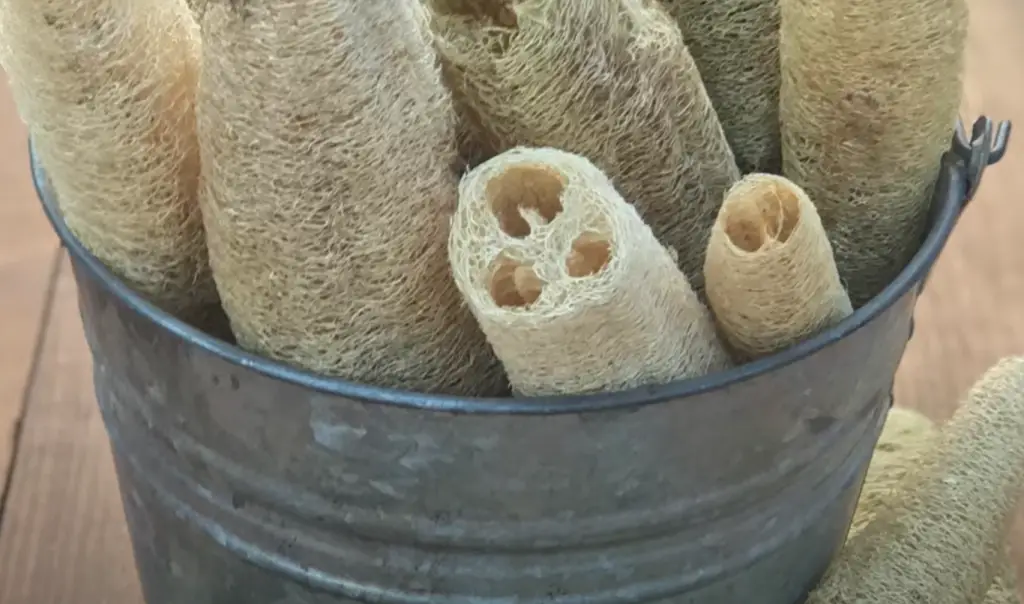
The leaves are broad and lobed with saw-toothed edges. The flowers are yellow or white and tube-shaped with five petals. The fruits are cylindrical and measure up to 10 inches (25 cm) long.
How to grow your own loofah?
To grow your own luffa, you’ll need to start with a seed. Luffa seeds can be found in some garden stores or online. Once you have the seeds, they should be planted in well-draining soil that’s rich in organic matter and at least 8 inches (20 cm) deep.
Plant them 1 inch (2 cm) deep and space the seeds 1 foot (30 cm) apart. Make sure to keep the soil moist, but not soggy, throughout the growing season.
For best results, choose a sunny spot and support the vines as they grow by providing a trellis or other type of structure for them to climb on. It’s also helpful to use mulch to keep the soil moist and moderate temperatures.
Location and soil requirements
When choosing a location for your luffa plants, make sure the area is well-drained. Luffa doesn’t like wet feet, so if you have heavy clay soils or areas that tend to flood, these aren’t ideal locations. The soil should also be amended with compost or manure before planting to give the plants a nutrient boost.
Sowing and caring for luffa
To sow the luffa seeds, place them 1 inch (2 cm) deep in the soil. Space the seeds 1 foot (30 cm) apart and keep the soil consistently moist until germination occurs, usually within three to four weeks. Once the seedlings emerge, thin them so that there is only one plant per every 3 feet (1 m).
Proper luffa care
This includes regular watering and fertilising. Water the plants at least once a week, or more during periods of drought. Fertilise using a balanced fertiliser every two to four weeks throughout the growing season.
Harvesting and using loofahs
Luffa fruits are ready to harvest when they turn brown and the spongy interior can easily be seen.
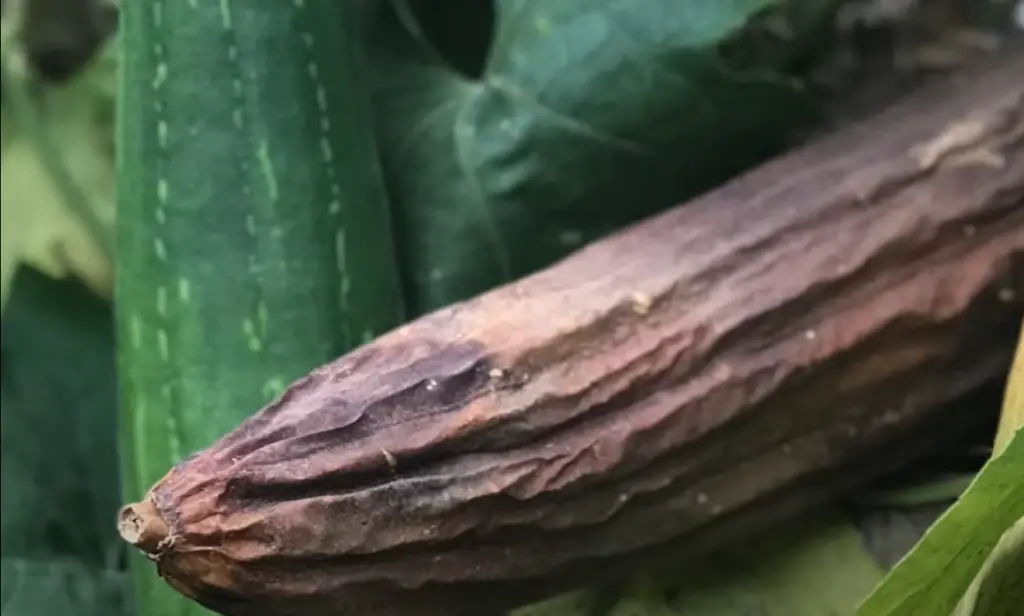
Cut the fruits from the vine using a sharp knife, then hang them in a dry place for 10 to 14 days until they are fully dried out. Once they’re dry, you can use them as scrubbing tools or dishcloths.
Is luffa edible?
Yes, luffa can be eaten. The young fruits are edible when cooked and have a cucumber-like taste. The older fruits should not be eaten, as the spongy interior isn’t palatable.
FAQ
How long does it take for luffa to grow?
It typically takes about 60-90 days for luffa to reach maturity. This can vary depending on the climate and growing conditions, but it will usually take between two and three months from planting until harvest.
When should I plant my luffa?
Luffa is best planted in early spring when the soil temperature has reached 65–70°F (18–21°C). It can also be planted in late summer or early fall for a fall harvest.
How long do luffa plants live?
Luffa plants are annual and will die after one season. They can be replanted the following year if you wish.
Can I grow luffa indoors?
Yes, you can grow luffa indoors as long as you provide the plant with enough sunlight and water.
Additionally, be sure to keep the soil moist but not soggy.What pests and diseases can affect luffa plants?
Luffa plants are susceptible to several common garden pests including aphids, cucumber beetles, and squash bugs. To prevent these pesky critters from attacking your plants, use insecticidal soap or a natural bug spray made of garlic and peppermint oil.
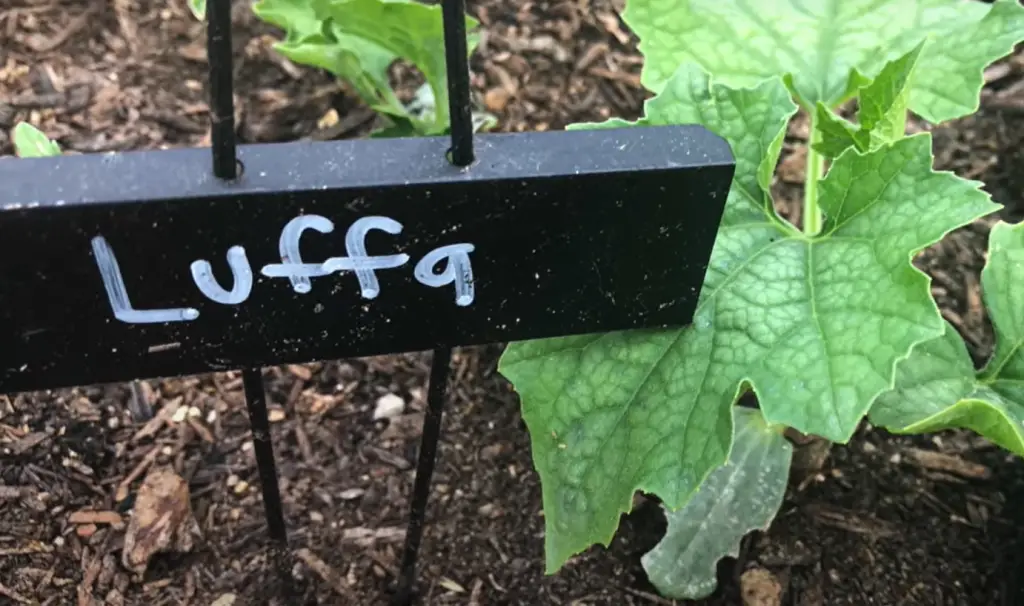
As for diseases, luffa can be affected by fungal diseases such as powdery mildew and downy mildew.
Are luffa plants easy to grow?
Yes, luffa plants are relatively easy to grow as long as you provide them with the right growing conditions. They can be grown in containers or outdoors in a sunny spot with well-draining soil.
Make sure to water regularly and fertilise every few weeks during the growing season for best results. With some patience and care, you’ll have lush vines full of spongy fruits in no time.
How many loofahs grow on one plant?
A single luffa plant can produce between one and six spongy fruits, depending on the variety and growing conditions.
To maximise yields, make sure to choose a healthy spot with adequate sunlight and soil that’s well-draining. Additionally, provide support for the vines so they have something to climb on as they grow.
What are the benefits of growing luffa?
Growing luffa is a great way to produce natural, eco-friendly scrubbing tools or dishcloths. You can also use the fruits for cooking and they’re full of beneficial vitamins and minerals.
Plus, they’re relatively easy to grow and make an attractive addition to any garden. No matter how you use them, luffa plants are a great choice for gardeners looking to add some diversity to their landscape.
Are there any uses for the leaves and flowers of loofah plants?
Yes, the leaves and flowers of luffa plants can be used in cooking or as part of an herbal remedy.
The young leaves can be eaten raw or cooked, and the flowers are full of antioxidants that can be used to make tea or other herbal remedies. So don’t forget to save some of your luffa harvests for a healthy snack or drink!
Do loofahs need full sun?
Yes, luffa plants need full sun in order to produce healthy vines and spongy fruits. Make sure to choose a spot that receives at least 6-8 hours of direct sunlight each day.
If you’re growing them indoors, be sure to provide the plants with a bright window or supplement the light with grow lights. Keeping the luffas in a sunny spot will ensure you have plenty of spongy fruits for all your scrubbing needs.
Is growing loofah profitable?
Yes, growing luffa can be a profitable venture. The spongy fruits are highly sought after in markets and make great natural scrubbing tools or dishcloths. Plus, the plants themselves have attractive foliage that can add interest to any garden.
So if you have the space and time, why not give luffa gardening a try? You may just find you have a profitable new hobby!
What is the best climate to grow loofah?
The best climate to grow luffa in is one with warm summers and mild winters. The ideal temperature range for growing luffa is between 65–70°F (18–21°C) during the day and 55–60°F (13–16°C) at night.
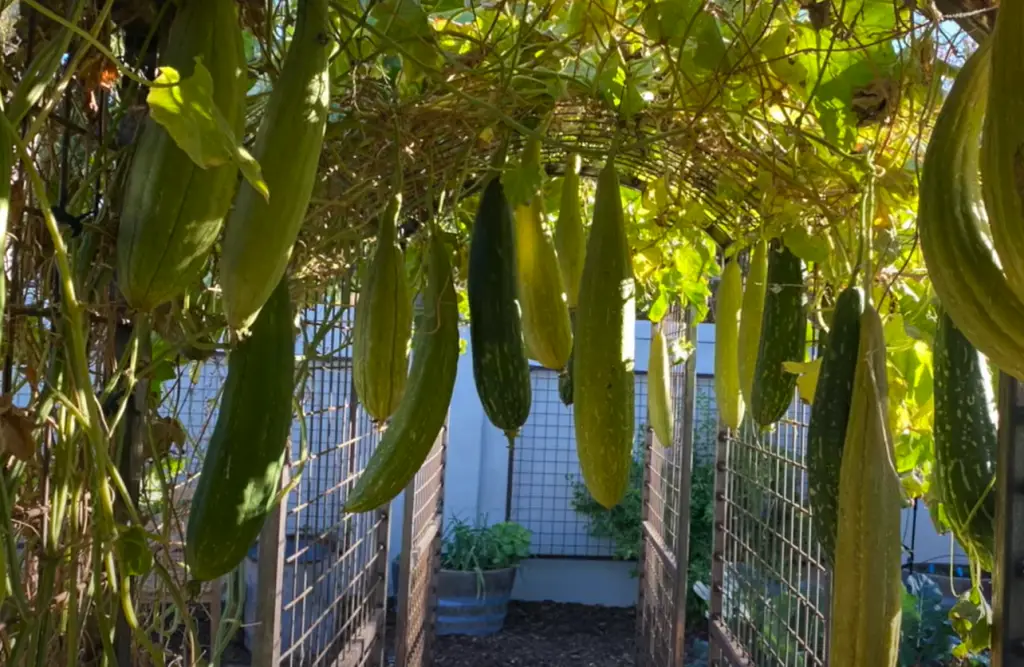
In areas with cooler climates, it’s best to plant the seeds indoors and transplant them outside when the weather warms up. With some careful planning, you can grow loofahs in almost any climate!
What is the best soil for growing luffa?
The best soil to grow luffa in is light and well-draining. Good drainage is key to keeping your plants healthy, as too much moisture can cause root rot or other issues.
Additionally, adding some fertiliser or aged compost will help ensure the soil provides enough nutrients for a successful crop.
What is the best way to harvest luffa?
The best time to harvest luffa is when the spongy fruits are still green and before they start to dry out. To pick the fruit, use sharp scissors or pruners and carefully cut it from the vine.
Once you’ve harvested your crop, you can either cook them right away or let them dry on the vine until they reach peak sponginess.
Are luffa fruits edible?
No, luffa fruits are not edible as the spongy interior isn’t palatable. However, you can use them to make natural scrubbing tools or dishcloths for cleaning. Additionally, some people pickle or cook the young fruits before they reach maturity.
How can luffa be used?
Luffa fruits make great natural scrubbing tools or dishcloths.
Additionally, the young leaves and flowers of luffa plants can be eaten raw or cooked as a healthy snack or used to make herbal teas and remedies.
No matter how you use them, luffa plants are a great choice for gardeners looking to add some diversity to their landscape.
How should luffa plants be stored?
To maximise the shelf-life of your luffa fruits, store them in a cool, dry place away from direct sunlight. If you plan to use them as scrubbing tools or dishcloths, hang them up out of reach of small children and pets.
Additionally, make sure to keep the soil they’re planted in moist, as luffa plants don’t do well in dry soil.
How often should luffa plants be watered?
Luffa plants need to be watered regularly during the growing season, but not so much that the soil becomes soggy.
A good rule of thumb is to give them a deep drink every week or two and check the soil frequently to make sure it isn’t too dry. Additionally, avoid watering from overhead, as this can cause the leaves and flowers to rot.
What pests can affect luffa plants?
The most common pest that affects luffa plants is aphids, small sap-sucking insects that can spread quickly.
To manage them, use a natural insecticide or try blasting them with a strong stream of water from the hose. Additionally, you can cover the plants with a fine mesh to keep the pests away.
How long does it take a luffa plant to mature?
It takes about 70-80 days for luffa plants to reach maturity, depending on the variety and growing conditions.
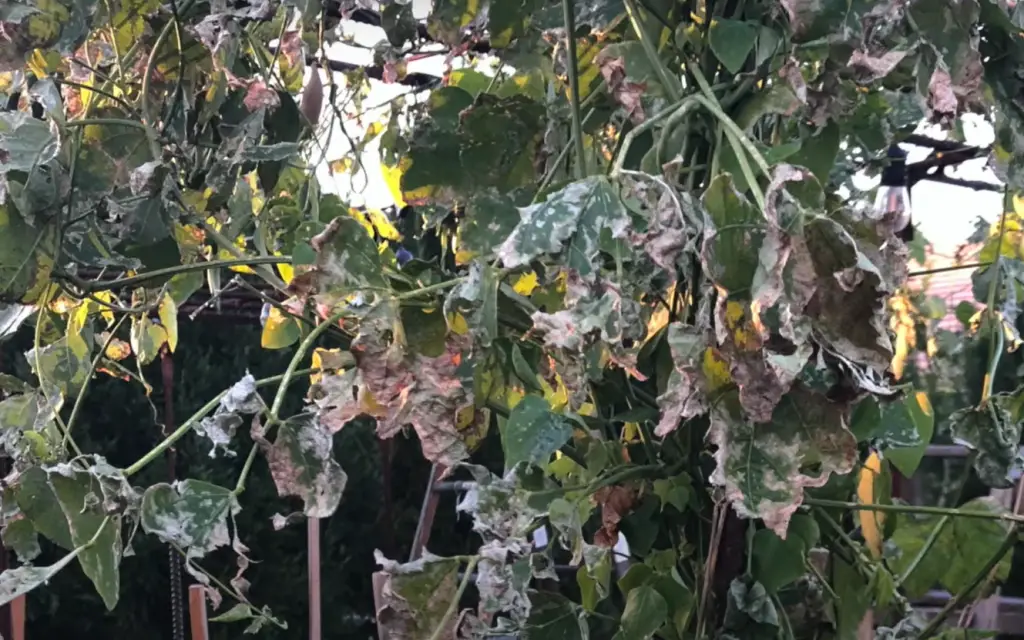
Once the fruits are ripe, they should be picked and used as soon as possible. If you plan to store them for later use, let them hang from the vine until they reach peak sponginess.
Which varieties of luffa are best for growing?
The best varieties of luffa to grow depend on your climate and what you plan to use the fruits for. For cooking, the Luffa cylindrica is one of the most popular species, as it’s easy to grow and produces plenty of spongy fruits.
Additionally, the Luffa aegyptiaca is well-suited to warmer climates and its fruits make excellent scrubbing tools. Whichever variety you choose, you can be sure that luffa plants will provide plenty of usefulness in any garden.
Does luffa attract any beneficial bugs?
Yes, luffa plants attract helpful pollinators like bees, butterflies, and other insects. Keeping the flowers blooming will help ensure that you have plenty of buzzing visitors in your garden.
Additionally, these beneficial creatures help control pests by eating aphids and other sap-sucking insects.
Do luffa plants need to be pruned?
Yes, it’s important to prune your luffa plants regularly. Pruning helps encourage new growth and keep the vines healthy. Additionally, regular pruning can help increase yields by making sure there are plenty of flowers for pollinators to visit.
When you prune your luffa plants, use sharp scissors or pruners and cut back the vines to about 4-5 feet long. This will keep them from growing too tall and taking over your garden.
Are there any other tips for growing luffa?
Yes! To ensure a successful crop of spongy fruits, make sure to keep the soil moist and fertilise your plants regularly.
Additionally, you can add mulch around the base of the vines to help preserve moisture and protect the roots from becoming too wet. If you plan to store your luffa fruits for later use, make sure to hang them out of reach of small children and pets.
Does luffa require any special care?
No, luffa plants don’t require any special care. However, it’s important to make sure the soil is well-drained and that you water your plants regularly.
Additionally, providing some fertiliser or aged compost will help ensure that the soil provides enough nutrients for a successful crop.
Do luffa plants have any medicinal benefits?
Yes, luffa plants have been used for centuries to treat a variety of ailments. The leaves are often brewed into teas and remedies to help with digestive issues, respiratory problems, and skin irritations.
Additionally, the fruits can be used as natural exfoliants or poultices for treating wounds. No matter how you choose to use them, luffa plants are a great addition to any garden.
Does Luffa require a lot of space?
No, luffa plants don’t take up a lot of space. A single plant can easily fit in a pot or container, and you can even train them to climb trellises and fences if you have the room.
Additionally, luffa plants are great for small gardens, as they don’t spread out too much and can be easily pruned to keep them contained.
Do luffa plants need a lot of sunlight?
No, luffa plants don’t require a lot of sunlight. They will grow best in areas that receive partial shade or at least four to six hours of direct sun each day. Additionally, make sure the soil is well-drained and never let it become soggy, as this can lead to root rot and other issues.
Can luffa plants be grown indoors?
Yes, luffa plants can be grown indoors in containers or pots with plenty of drainage holes. To ensure your plant gets enough light, position it near a south-facing window and make sure to give it regular watering.
Additionally, fertilising the soil with aged compost or organic fertiliser every few weeks can help promote healthy growth.
Is it easy to harvest luffa fruits?
Yes, harvesting luffa fruits is quite simple. When the fruits are ripe, use a sharp knife or scissors to cut them off the vine and then hang them somewhere cool and dry to finish ripening.
Additionally, make sure to pick your fruits as soon as they reach peak sponginess, as this will ensure that they don’t become too soft.
Can luffa be eaten?
Yes, luffa fruits can be eaten in various ways. Young fruits can be chopped and added to stir-fries or soups, while mature ones can be peeled and eaten raw.

Additionally, the seeds of luffa plants can be roasted and used as a crunchy snack or added to cereal for some extra flavour. Regardless of how you choose to enjoy them, luffa fruits are an excellent source of vitamins and minerals.
Does luffa need to be cooked before eating?
No, luffa fruits do not need to be cooked before eating, though they can be enjoyed raw or lightly steamed. Additionally, the seeds should be roasted before consuming them.
Regardless of how you choose to prepare your luffa fruits and seeds, make sure to enjoy them fresh for maximum nutrition and flavour.
What other uses are there for luffa?
Luffa fruits have a wide range of other uses beyond cooking. The spongy fibres can be dried, peeled, and turned into scrubbing tools or body exfoliators.
Additionally, you can steep the leaves in water to make teas or remedies for a variety of ailments. As you can see, luffa plants provide plenty of useful benefits in any garden.
Do luffa plants need to be replanted each year?
No, luffa plants are annuals and don’t require replanting. As long as you keep the soil moist and provide a few hours of sun each day, your plants will produce plenty of fruits without needing to be replaced.
Additionally, you can save some seeds from mature fruits in order to grow new plants in the following season.
Does luffa require any special soil?
No, luffa plants do not have any special soil requirements. However, they will grow best in well-draining soils that are enriched with some aged compost or organic fertiliser.
Additionally, make sure to water your plants regularly and provide a few hours of sunlight each day. This will help ensure a successful crop of luffa fruits.
Do luffa plants need to be pollinated?
Yes, luffa plants need to be pollinated in order for the flowers to produce fruit. The best way to ensure successful pollination is by attracting bees and other types of beneficial insects like hoverflies and butterflies to your garden.
Additionally, you can hand pollinate the flowers with a soft paintbrush. This will help ensure that your luffa plants produce plenty of spongy fruits.
What kind of pests are attracted to luffa plants?
Unfortunately, luffa plants can be susceptible to various types of pests including aphids, mealybugs, and whiteflies. To prevent an infestation, make sure to do regular inspections of your plants and remove any pests that you find.
Additionally, treating the leaves with neem oil or a mild insecticidal soap can help keep these pesky critters away from your luffa vines.
Do luffa plants need to be pruned?
Yes, it’s important to prune your luffa plants regularly. This will help keep them contained and ensure that they don’t spread out too much in the garden.
Additionally, trimming off any dead or diseased stems can help keep your plants healthy and give you a better chance of having a successful crop.
Useful Video: HOW to PLANT and GROW LUFFA (LOOFAH), plus WHEN to HARVEST and HOW to PEEL
Conclusion
Luffa plants are a great addition to any garden, providing plenty of beneficial uses beyond just eating. They don’t require much space or sunlight, and they can even be grown indoors in containers.
Additionally, luffa plants need to be pollinated and regularly pruned in order for them to produce fruits.
With the right care and attention, you can enjoy a bounty of luffa fruits every year. So why not give it a try and add some luffa plants to your garden today?
References:
- https://plantura.garden/uk/vegetables/cucumbers/luffa





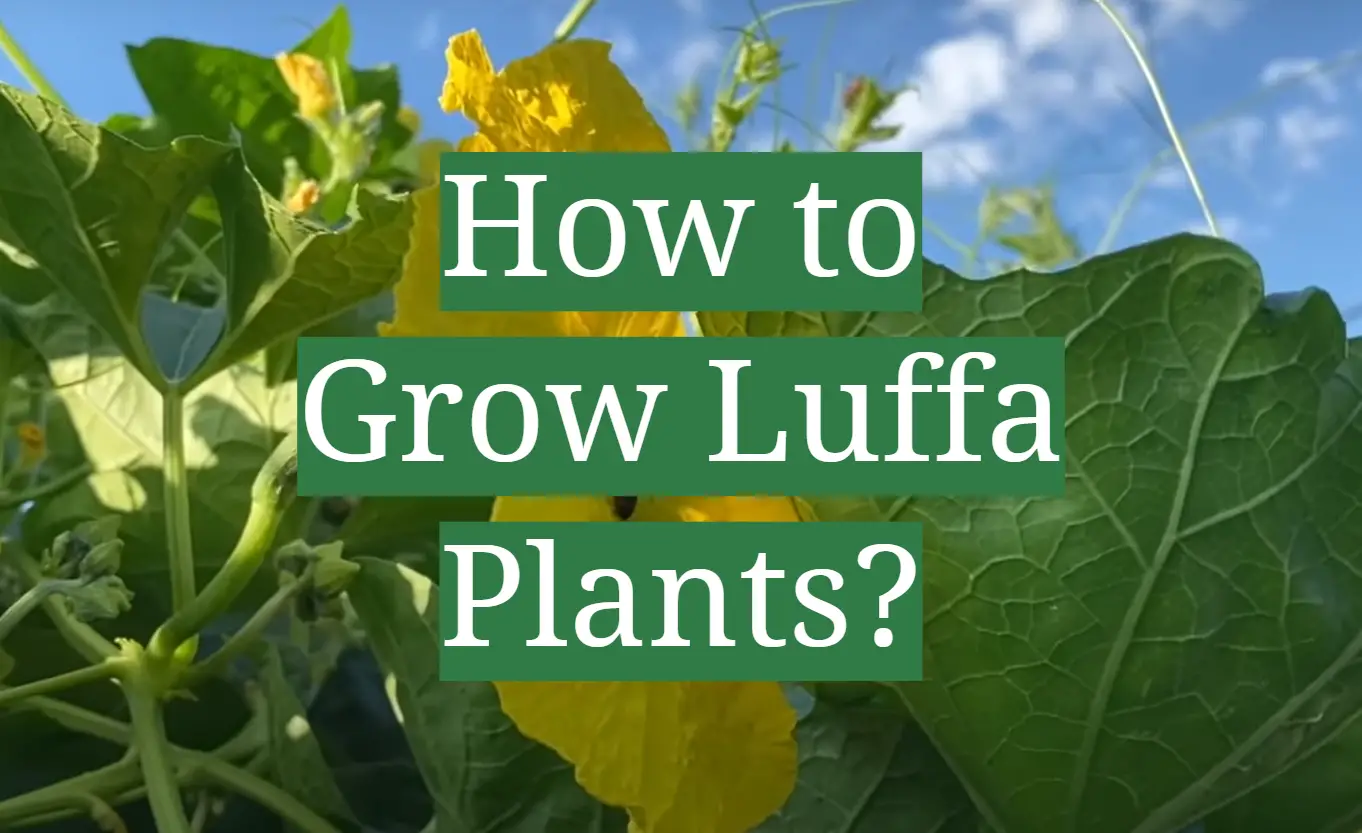




Leave a Reply
View Comments